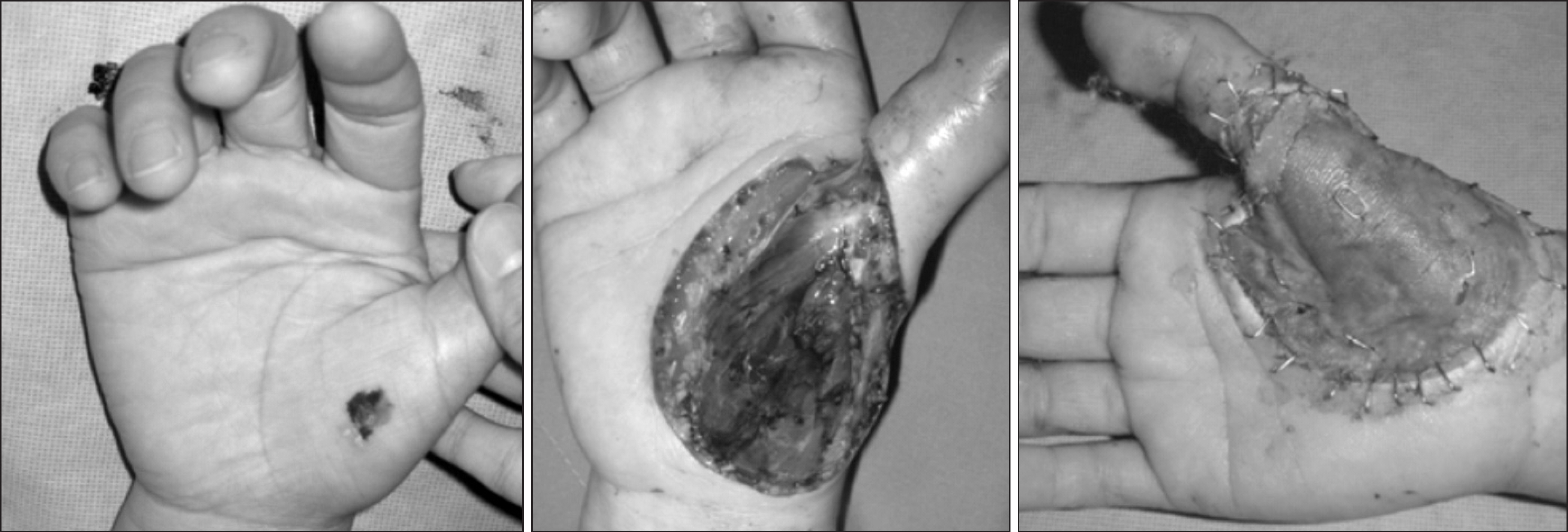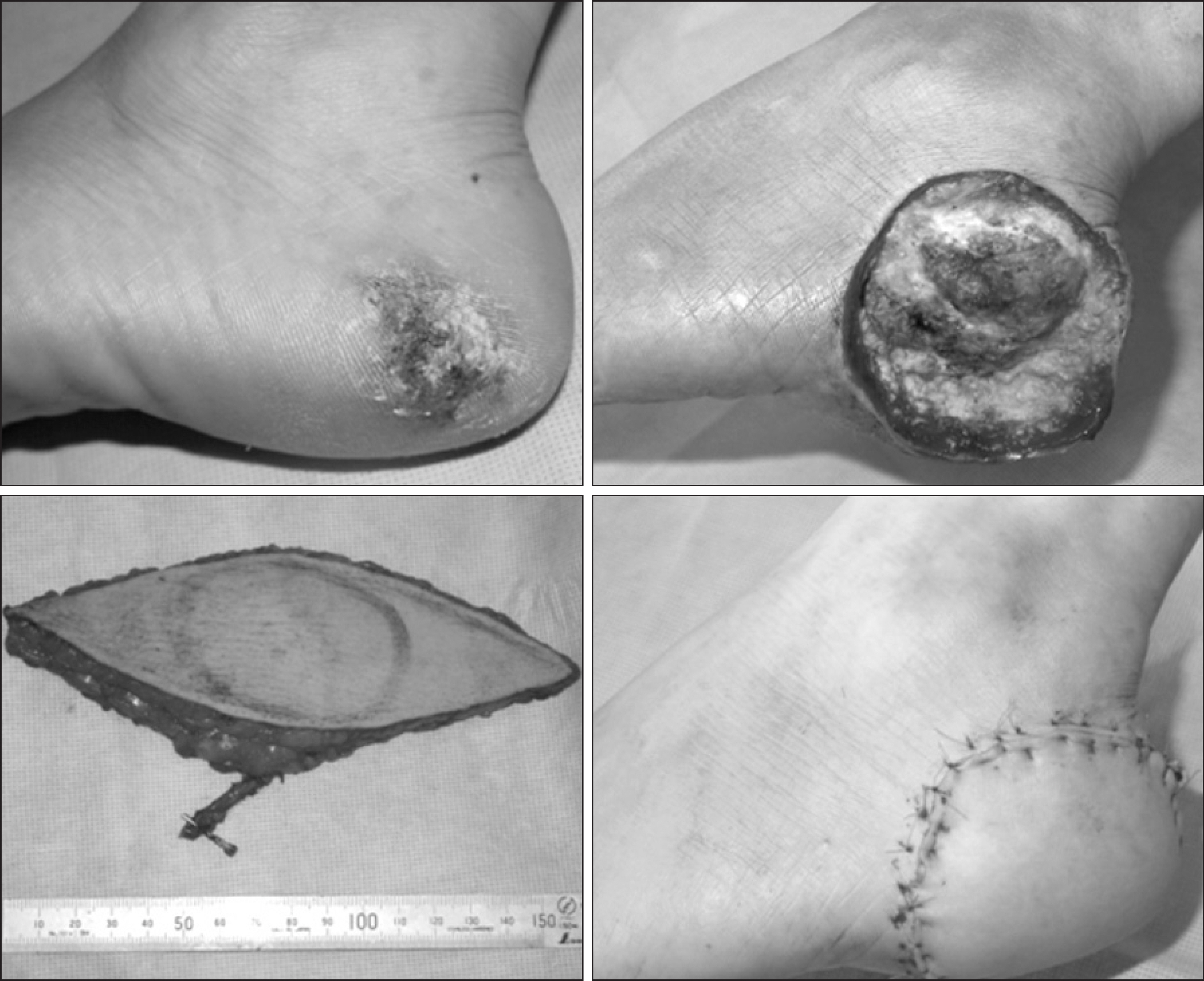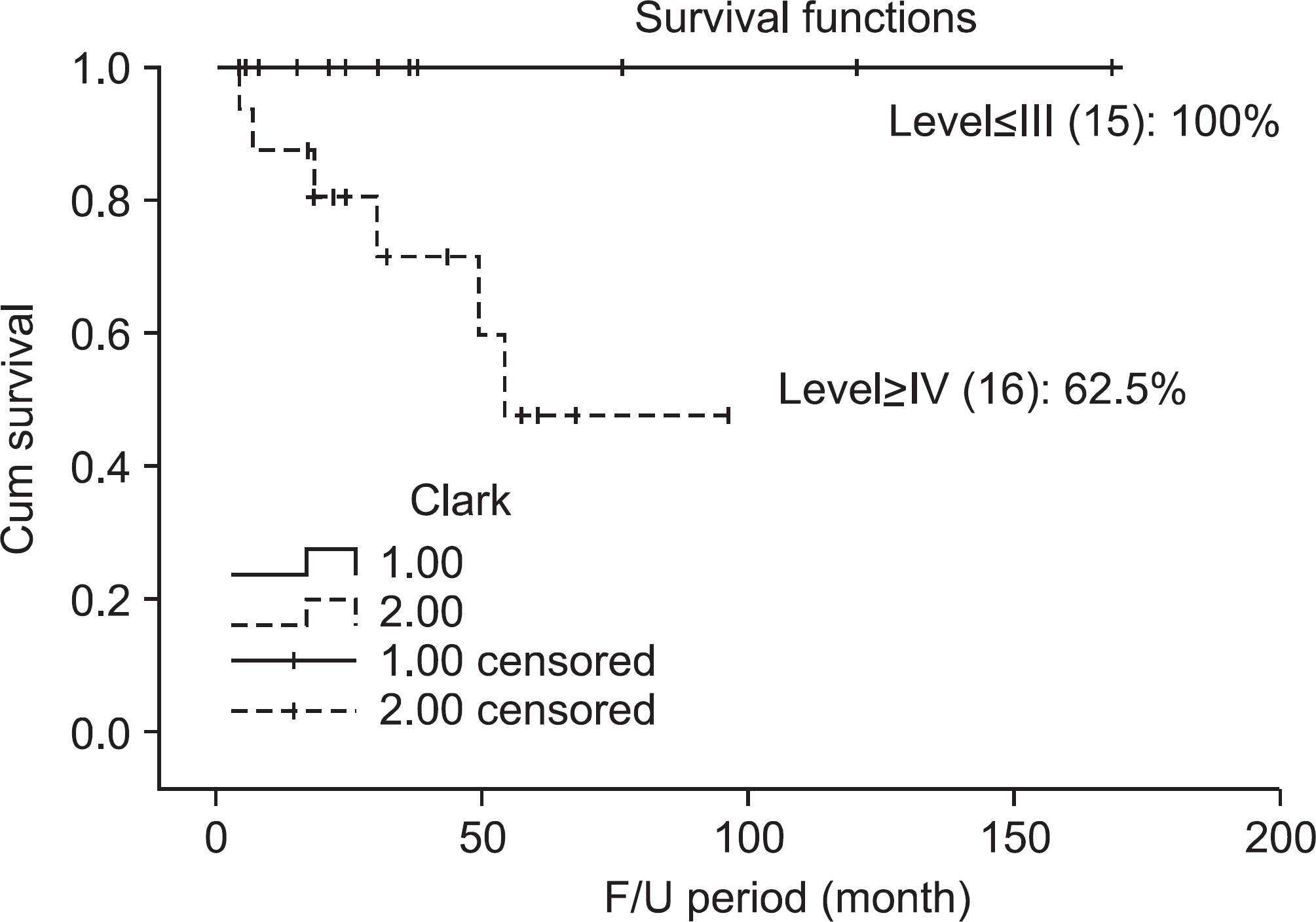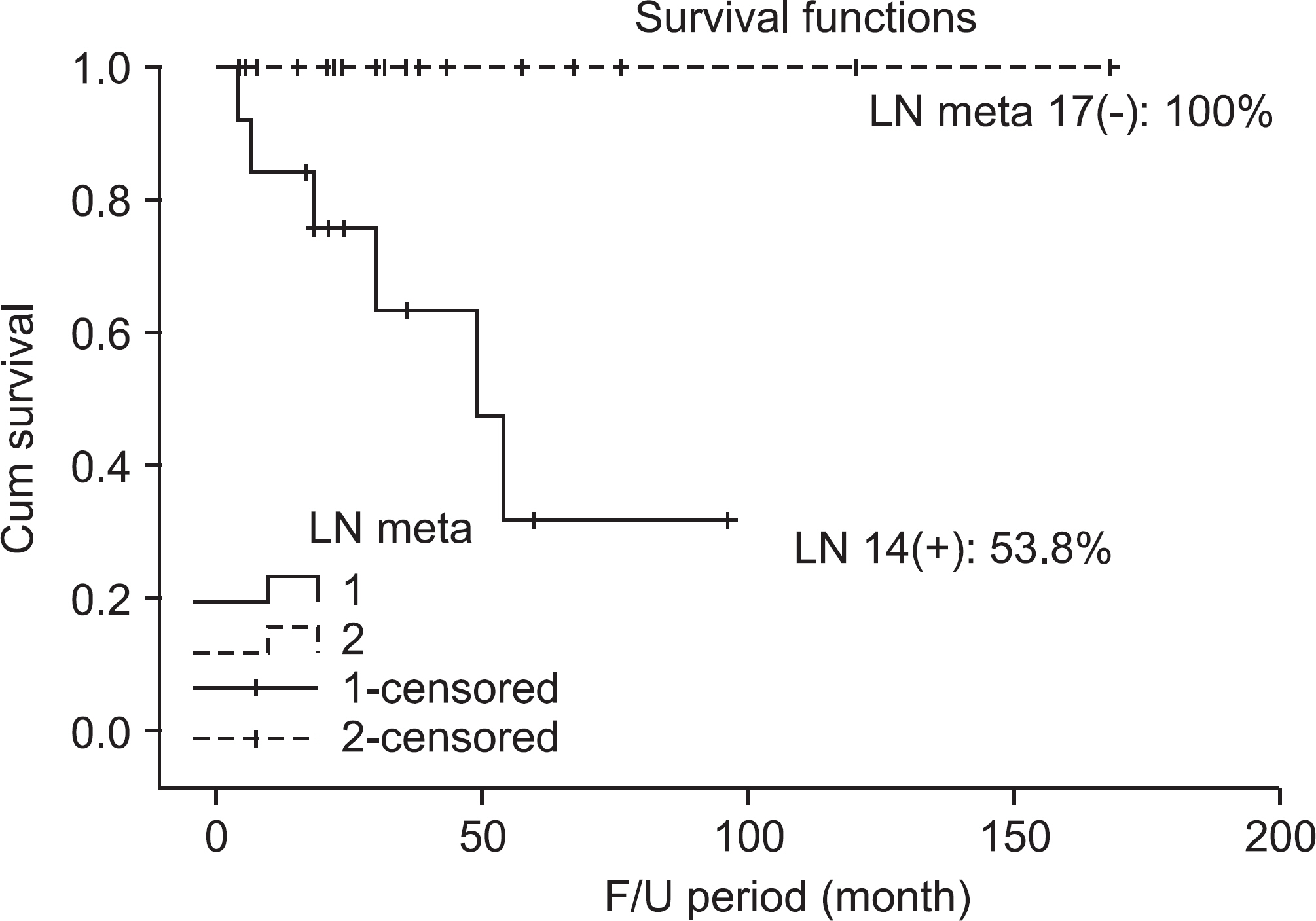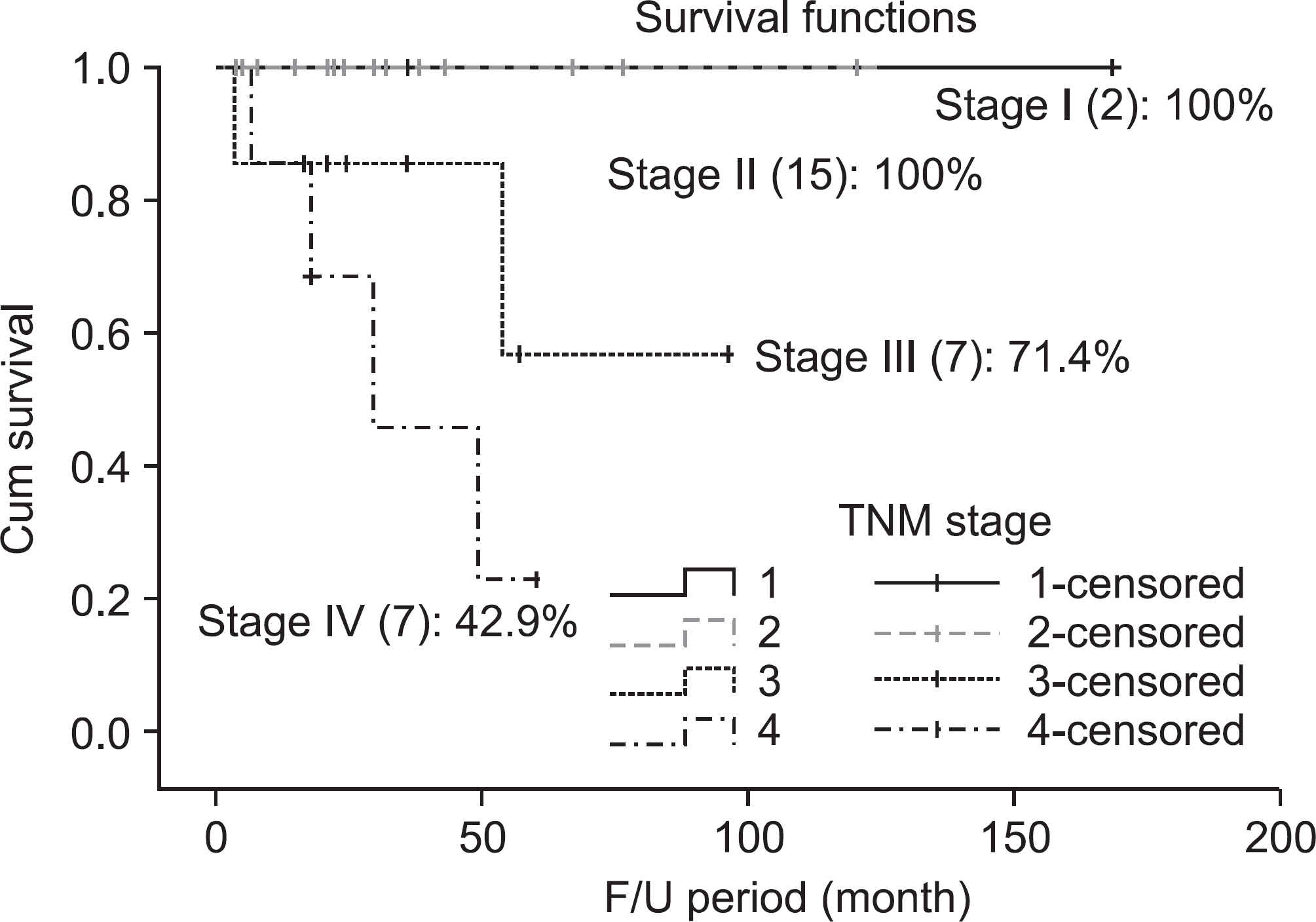J Korean Bone Joint Tumor Soc.
2011 Jun;17(1):30-35. 10.5292/jkbjts.2011.17.1.30.
Analysis of Treatment Results of Malignant Melanoma
- Affiliations
-
- 1Department of Orthopedic Surgery, Yeungnam University College of Medicine, Daegu, Korea. shinds@med.yu.ac.kr
- KMID: 2137041
- DOI: http://doi.org/10.5292/jkbjts.2011.17.1.30
Abstract
- PURPOSE
This study was designed to evaluate the treatment results of malignant melanoma and to analyze the factors influencing prognosis.
MATERIALS AND METHODS
Thirty one cases of malignant melanoma were included in this study. They were treated in our hospital surgically, medically and immunologically from January 1996 to December 2005, and were followed more than 5 years. We compared 5 year survival rate (5YSR) according to the age, gender, anatomical site, depth of tumor, TNM stage, involvement of lymph node and immuno-chemotherapy.
RESULTS
Overall 5YSR was 80.6%. 5YSR of the age group below 65 years was 89.7% and 66.7% for the age group over 65 (p=0.033). 5YSR for men was 75% and 90.9% for women. 5YSR according to the site of occurrence showed 66.7% in upper extremities, 89.5% in lower extremities, and 66.7% in other site. 5YSR was 100% for the Clark level below III and 62.5% for the level above IV (p=0.032). 5YSR was 53.8% for lymph node metastasis group and 100% for non-lymph node metastasis group (p=0.021).
CONCLUSION
We concluded that early diagnosis and wide excision was the most important in treatment of malignant melanoma. The prognostic fractors of malignant melanoma were age, depth of tumor (Clark's stage) and metastasis of lymph node.
MeSH Terms
Figure
Reference
-
1. Rigel DS, Carucci JA. Malignant melanoma: prevention, early detection, and treatment in the 21st century. CA Cancer J Clin. 2000; 50:215–36.2. Park JH, Lee HS, Ham DH, Kim JR. An analysis of the prognostic factors of malignant melanoma. J Korean Bone & Joint Tumor Soc. 2009; 15:122–9.3. Cummins DL, Cummins JM, Pantle H, Silverman MA, Leonard AL, Chanmugam A. Cutaneous malignant melanoma. Mayo Clin Proc. 2006; 81:500–7.
Article4. Clark WH. A classification of malignant melanoma in man correlated with histiogenesis and biologic behavior. Adv Biol Skin. 1976; 8:621–47.5. Balch CM, Buzaid AC, Soong SJ, et al. Final version of the American Joint Committee on Cancer staging system for cutaneous melanoma. J Clin Oncol. 2001; 19:3635–48.
Article6. Breslow A. Thickness, cross-sectional areas and depth of invasion in the prognosis of cutaneous melanoma. Ann Surg. 1790; 172:902–8.
Article7. Verma S, McCready D, Bak K, Charette M, Iscoe N. Systematic review of systemic adjuvant therapy for patients at high risk for recurrent melanoma. Cancer. 2006; 106:1431–42.
Article8. Sekulic A, Haluska P, Miller AJ, et al. Malignant melanoma in the 21st century: the emerging mole cular landscape. Mayo Clin Proc. 2008; 83:825–46.9. Su WP. Malignant melanoma: basic approach to clinicopathologic correlation. Mayo Clin Proc. 1997; 72:267–72.10. Rhee SK, Kang YK, Park WJ, Chung YG, Lee HJ. Malignant melanoma. J Korean Bone & Joint Tumor Soc. 2001; 7:12–9.11. Nahabedian MY. Malignant melanoma. Clin Plast Surg. 2005; 32:249–59.

